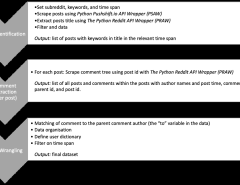Authors: Hongzhi Qi, Hanfei Liu, Jianqiang Li, Qing Zhao, Wei Zhai, Dan Luo, Tian Yu He, Shuo Liu, Bing Xiang Yang, Guanghui Fu
Published on: April 19, 2024
Impact Score: 7.8
Arxiv code: Arxiv:2404.12659
Summary
- What is new: Development of a Chinese social media dataset aimed at fine-grained suicide risk classification and the use of large language model based data augmentation to improve model performance.
- Why this is important: Difficulty in identifying suicidal intent on social media due to implicit and varied expressions in internet language, especially in the Chinese context.
- What the research proposes: Evaluation of seven pre-trained models on a new dataset for suicide risk classification, focusing on indicators such as expressions of intent, methods, and urgency of timing.
- Results: Best model achieved an F1 score of 88.39% for high and low suicide risk classification, but only a weighted F1 score of 50.89% for fine-grained classification, indicating the challenge in detailed suicide risk categorization.
Technical Details
Technological frameworks used: nan
Models used: Chinese MentalBERT, six other pre-trained deep learning models
Data used: Chinese social media dataset
Potential Impact
Social media platforms, mental health organizations, and crisis intervention services
Want to implement this idea in a business?
We have generated a startup concept here: MindGuard.


Leave a Reply